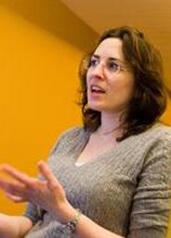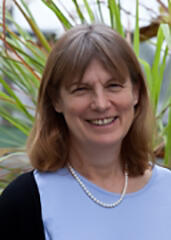
 Elena Kramer, Bussey Professor of Organismic and Evolutionary Biology, and Noel Michele Holbrook, Charles Bullard Professor of Forestry, co-teach General Education course OEB 52: Biology of Plants through lectures, labs, field trips, and weekly quizzes that students use to combine concepts into a creative project at the end of the semester. The prompt, “Trace the rise of the sporophyte,” results in the production of resources like videos, art pieces, fashion magazines, original songs, poems, and children’s books that students present in an arts festival during the final class.
Elena Kramer, Bussey Professor of Organismic and Evolutionary Biology, and Noel Michele Holbrook, Charles Bullard Professor of Forestry, co-teach General Education course OEB 52: Biology of Plants through lectures, labs, field trips, and weekly quizzes that students use to combine concepts into a creative project at the end of the semester. The prompt, “Trace the rise of the sporophyte,” results in the production of resources like videos, art pieces, fashion magazines, original songs, poems, and children’s books that students present in an arts festival during the final class.